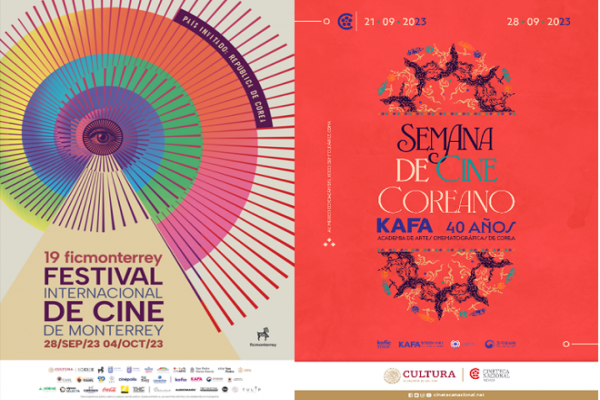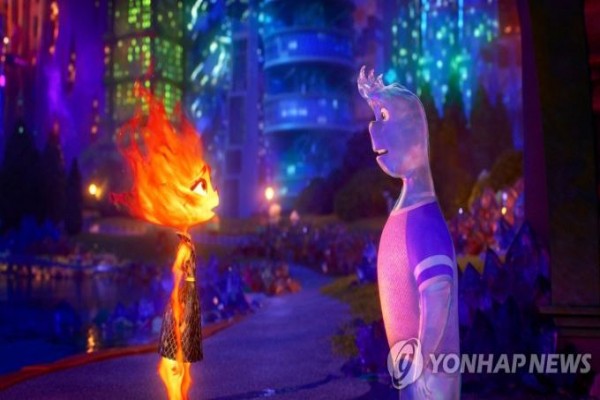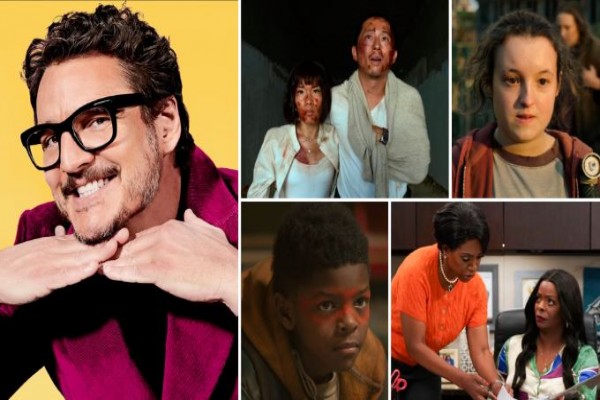130, Suyeonggangbyeon-daero,
Haeundae-gu, Busan, Republic of Korea,
48058
NEWS & REPORTS
Animator Lee Chae-yeon on the Necessity to Be Accustomed to Ethnic Diversity
- Source by Cine21
- View2539
Interview with ELEMENTAL Animator Lee Chaeyeon
People with diverse backgrounds took part in Elemental, which began as a semi-autobiographical story by Director Peter Son, a Korean-American and second-generation immigrant. Among them was animator Lee Chae-yeon, who after working on Doctor Strange in the Multiverse of Madness and Lightyear, joined the team for Elemental. Her contribution was in creating characters based on the four elements - water, fire, air, and earth - who populate Element City that would be in keeping with the visual codes of animation. Starting her career at a Korean game company, she went to Canada to pursue her dream of working at Pixar Studios. This is where she witnessed first-hand the changes in the animation industry and personally noticed that movies can become more creative and enjoyable when they include people of diverse background in its making. This week we sit down with Lee Chae-yeon as she is visiting Korea for the promotion of Elemental.

You had to create visuals for elements like water, fire, earth, and air, which are either not visible or tricky to portray. In contrast to your previous work Lightyear, which exhibited movements that were for the most part hyperrealistic, Elemental pursues the opposite approach.
Animators are responsible for character movements and emotional expressions. Particularly in Elemental we focused on how to represent the movements of the elements in a way that makes the characters more attractive. To visually represent the elements, various layers of computations were necessary. If we depict the characteristics of the elements too realistically, they might lose their charm as animation characters. So our approach was to conduct extensive research on how to translate them into cartoon characters to give them a realistic yet attractive look. For example, the fire element Amber had to appear as fire itself rather than someone who has been set on fire, and this needed to be portrayed in a way that would seem credible to the audience. If we had simply attached eyes, a nose, and a mouth to a fire, we would have run the risk of having the character appear unsettling to some viewers. While a human would use their arms to get up from a sitting position, Amber can simply rise naturally. However, if we had taken a too realistic approach for the animation of fire, Amber would have appeared ghostly. We went through trial and error to find the right balance to make the character charming. As for Wade, we used water balloons as a reference. Through trial and error, we identified subtle aspects to ensure it didn't just resemble a gelatinous ball.
Pixar is known for its meticulous adherence to science when creating films. How did you incorporate the chemical characteristics of elements into the characters?
When it comes to us animators, we often took real life as reference. We filmed videos in slow motion to observe how things behave when they get immersed in and removed from water, or the shapes fire takes when it rises after a gas flame is lit. For example, the changes of colors when Amber gets angry are also based on real properties. Pixar Animation Studios carries out such work for every show. For instance, if we have decided than an alien should the smooth moves of a tissue in water, then the animation team comes together to conducts research by directly filming these things for later reference.
Your team did all the work on the movie while working remotely during the COVID-19 pandemic. What were the advantages and disadvantages of this situation?
Animators often do overtime at the office. There were times when I started work at 6am and worked until 11pm. However, with remote work, I gained the freedom to decide when to start and finish my work. I had more freedom in my tasks. But this came with a sense of responsibility since we still had to meet deadlines. Some people found it difficult to adopt this system, while others enjoyed it. As long as you could get your work done by the designated time, you could gain more free time, leading to a better work-life balance. Currently, Disney-Pixar is taking a hybrid approach, combining office work and remote work.
The production of Elemental had more Korean persons involved than ever before. How would you compare the atmosphere when you first entered the animation industry to now?
After working as an animator in a Korean game company, I studied in Canada to pursue my dream of working at Disney-Pixar. Building my career from game characters to feature-length animation, I eventually ended up in the United States. While many Koreans secure a job in Canada through a working holiday visa after gaining experience in Korea, it was challenging to obtain a visa for the United States, which don’t allow for working holidays, and as a result there weren't many Korean artists there. I often found myself being the only Korean on the team. There were not many women animators either. I was craving for conversations with Koreans, for a Korean meal we could have together. However, over time, the number of Koreans in the team gradually increased. The Disney-Pixar studio-wide Slack chatroom has a total of 1,475 employees, and I know about 20 Koreans among them. But I’m sure there is more.
Does that diversity of backgrounds actually translate into a greater diversity in the film they work on? Is this something you experienced personally?
Animators from France have their own unique style, and those from Spain bring their distinctive ideas. When these individuals come together, diverse ideas can emerge, and Disney-Pixar never discounts their opinions; they are all accepted. There was a scene in Elemental where a character had to perform a bow. Director Peter Son said it didn't have to be a traditional Korean bow; it could be something that resonates with different cultural backgrounds. So, each of us explained how we bow in our respective countries, and we created a unique style of bowing.
From the film Minari to the Netflix series Beef, narratives revolving around immigrants of all kinds are becoming more visible. Do you think this is related to the racial diversity among the production team?
As time goes on, there will come a time when diversity can no longer be ignored, and media will represent diverse ethnicities. And it is also our duty to become accustomed to these changes for the next generation.
Interview by Im Soo-yeon








